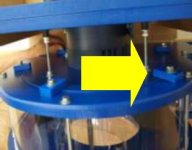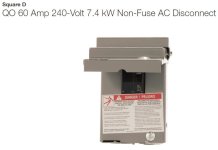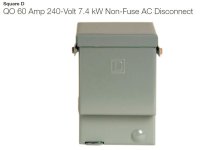egbell,
I really doubt you are over-thinking anything. By my way of thinking and from my experience, installing duct work, especially when seeking to mitigate static charges, is an expensive and time-consuming undertaking. Ensuring that you understand exactly how you will meet the foreseeable challenges makes for a smooth installation that will work has it is designed and stand the test of time.
Foil Tape. Not all shiny silver tape is foil tape. If the package does not state the tape is aluminum foil tape, it may not be electrically conductive. I think it is prudent to test the tape for electrical conductivity. One method is to set volt/multi-meter probes at different spots on the shiny side of the tape. The meter, set to measure resistance, should read near zero resistance. A high reading indicts the tape’s surface is non-conductive. Since metal is generally expensive, a 50 yard roll of tape should cost over about $15. Tape that is non-electrically conductive would be unsuitable because non-conductive tape would not conduct static electrical charges to ground.
I have found that the adhesive side of the tape is non-conductive; only the metal foil side is conductive. Therefore simply sticking a piece of bridge tape to connect two separate strips of tape will not establish continuity between the two strips of separated tape. The methods of which I am familiar for establishing electrical continuity across two strips of otherwise separated foil tape are:
A piece of copper wire is placed in contact with each of the two separate strips of foil tape. The bare copper wire can be secured at each end with screws or it can be taped in place. I did not use copper wire. I used one of the two foil tape methods described below, depending on which method worked best for the circumstances.
A piece of foil tape is folded back onto itself where the crease of the fold runs the length of the tape, making the tape narrower without changing its length. About 1/3 of the width of the tape is folded onto a second third of the tape. This then leaves about 1/3 of the folded tape with a thin strip of exposed adhesive. This folding reduces the width of the tape while leaving its length unchanged. The exposed adhesive is used to temporarily attach the folded tape to the two strips of tape that are being electrically connected. A second unfolded strip of foil tape is the applied over the folded tape to permanently secure the folded tape in place.
The other method involves creating a tab that remains electrically and mechanically connected to the foil face of the tape and which is on the adhesive face of the tape. The tab is formed near the center of the tape (centered width-wise). Three cuts are made to create a three sided rectangle where the fourth un-cut end of the rectangle acts as a hinge for the tab. The tab is folded back onto the adhesive and the tab, now on the adhesive side of the tape, is placed over the strip of tape to which an electrical connection is desired. Since the tab is near the width-wise center of the tape, no further taping is required. If connecting two strips of separated tape, two tabs would be required.
Aligning foil strips. Duct work running in all different directions should not present a problem ensuring strips of adjoining foil tape meet and connect at the joints. In my installation (a single strip of tape inside and out lapped over the ends), the fittings and pipe were taped so that when installed the tape aligned.
I kept the foil strips of tape aligned by holding the fitting or pipe in position as it would be installed. The fitting or pipe was left unconnected since all that is needed if to locate the position of the foil tape on the next piece of duct work. I used a Sharpie to make a mark where the tape was to be applied. The tape was then placed over the mark and continued in a straight line. If the mark was well-placed and the just-taped duct work installed as it was aligned, the strips of foil tape should align. This method worked for me on the more complicated application of two strips of tape on opposite sides of the pipes and fittings. Therefore is should work with a single strip of tape.
If for some reason this method for aligning the adjoining section of tape cannot be used, then an electric bridge will have to be installed; as described above under “Foil Tape”.
Inside and outside foil taping. In my installation I applied foil tape inside and outside the pipe and fittings as a single piece of tape, lapping the tape over the ends. The first step was to cut a piece of tape that was 2Xs the length of the pipe plus about 1’ (plus about 6” for fittings). The paper backing was released from the tape as the tape was affixed to the pipe. I started and ended the tape on the outside of the pipe. I wiped the dust from the pipe or fitting to ensure a good bond of the tape and the pipe or fitting. The result was a single continuous strip of tape on both the inside and outside of the pipe lapped over the ends.
However, I did not have the issue you are facing. The pipe and fittings in my installation came together with firm hand pressure even with the tape wrapping around and in alignment with the adjoining taped fitting/pipe (without any lubricant like soap or water).
While the idea of using a screw to connect tape inside the pipe to the grounding circuit sounds good, I would be concerned that the screw may press against the tape on the inside of the pipe and not pierce the tape and thus fail to establish electrical continuity with the screw. If this method is used, then the screw should probably be installed and inspected to ensure the screw pierces the tape and then tested for electrical continuity between the screw head on the outside of the pipe with the tape inside the pipe using a continuity tester or a multi-meter before installing the pipe or fitting.
Before abandoning the idea of lapping the tape around the ends of the fittings and pipe, there is one more lubricant that might be worth a try. Perhaps coating the joint with a thin layer of graphite might make the fittings slip together. Graphite, as you may know, is a lock lubricate and very slippery. Graphite is also electrically conductive and available in many home centers and hardware stores. It can be found in a dry fine powder form or mixed with a solvent that evaporates. It is messy and makes every around it, including your hands, black.
I am not sure whether Teflon, also sold as a lock lubricant, is electrically conductive. If Teflon is electrically conductive, then it could also be used; otherwise I would be concerned that using Teflon could coat the aluminum and reduce its conductivity at the joint.
Aside. As an aside, the entire system for mitigating the PVC static charges should probably be tested to ensure each drop has continuity back to the cyclone. I found that testing each just-installed fitting or pipe for electrical continuity before proceeding to the next fitting worked well. Any problems were discovered when it was fairly easy to correct.




